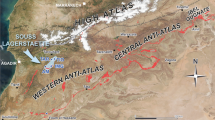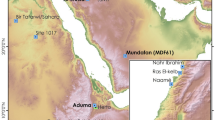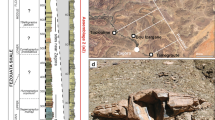Abstract
A HUNDRED years have elapsed since Mantell opened the controversy regarding the formation of flint, but hitherto, despite a voluminous literature on the subject, the crucial point, the time of formation, has remained undecided. The main issue has been narrowed down to one of two possibilities: either the flint was formed contemporaneously, by precipitation of silica gels on the sea-floor, or it was formed subsequently to the deposition of the Chalk, by the solution and segregation of silica disseminated through the chalk chiefly from the remains of sponges. The arguments in favour of the rival views are fairly evenly divided, and a strong case can be made out for both contemporaneous and subsequent formation. In fact, almost every observation can be made to fit in equally well with either view; and, like the evidence, so the supporters of the theories, past and present, are evenly divided. An infallible criterion of the age of flint is, therefore, a prime necessity, and the purpose of this note is to suggest one, of which the only remarkable feature is its extreme simplicity. The condition of the sponge remains found in flint is in itself adequate proof that the formation was subsequent.
This is a preview of subscription content, access via your institution
Access options
Subscribe to this journal
Receive 51 print issues and online access
$199.00 per year
only $3.90 per issue
Buy this article
- Purchase on Springer Link
- Instant access to full article PDF
Prices may be subject to local taxes which are calculated during checkout
Similar content being viewed by others
Author information
Authors and Affiliations
Rights and permissions
About this article
Cite this article
BURTON, M. The Age of Flint. Nature 128, 32–33 (1931). https://doi.org/10.1038/128032a0
Issue Date:
DOI: https://doi.org/10.1038/128032a0
Comments
By submitting a comment you agree to abide by our Terms and Community Guidelines. If you find something abusive or that does not comply with our terms or guidelines please flag it as inappropriate.



